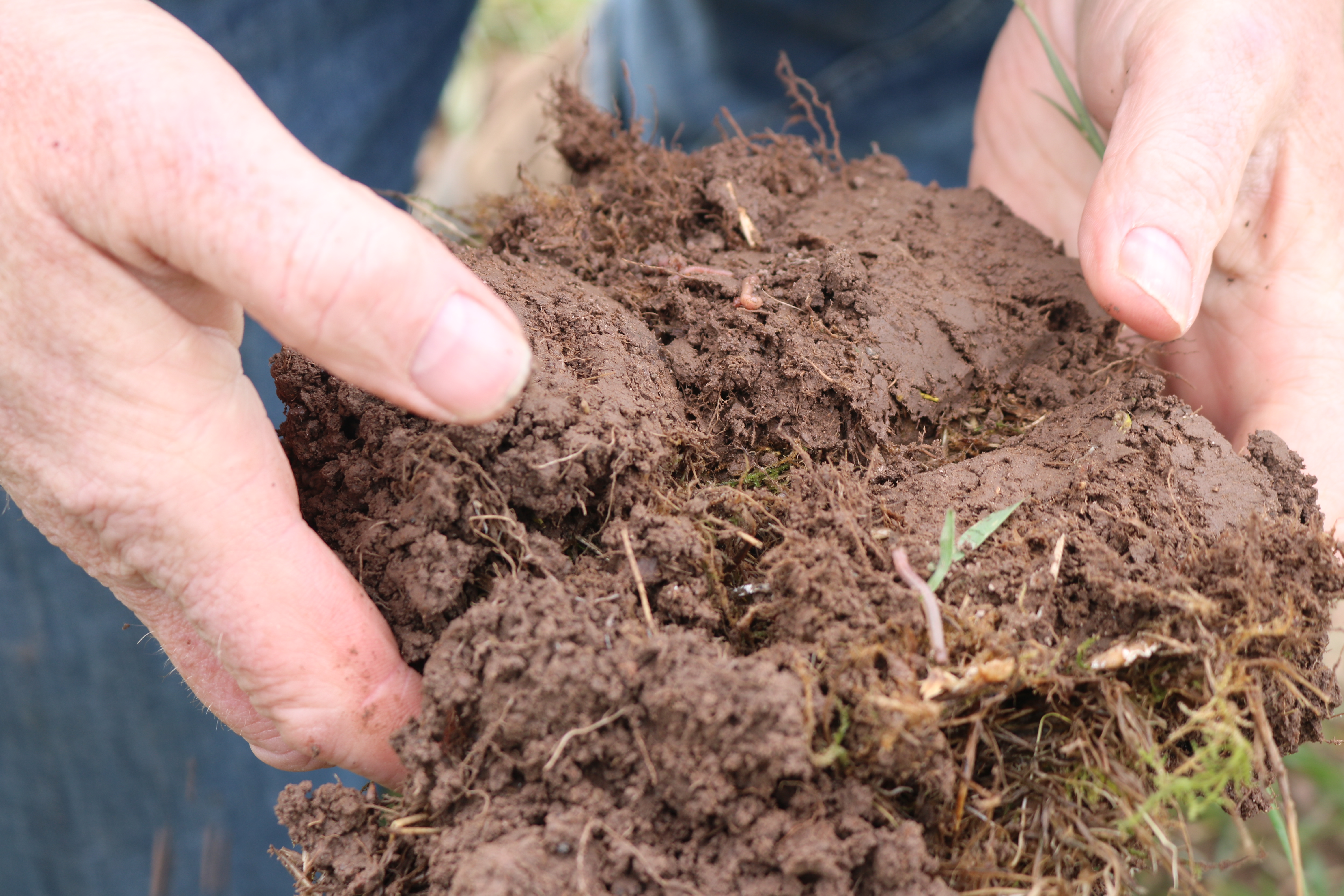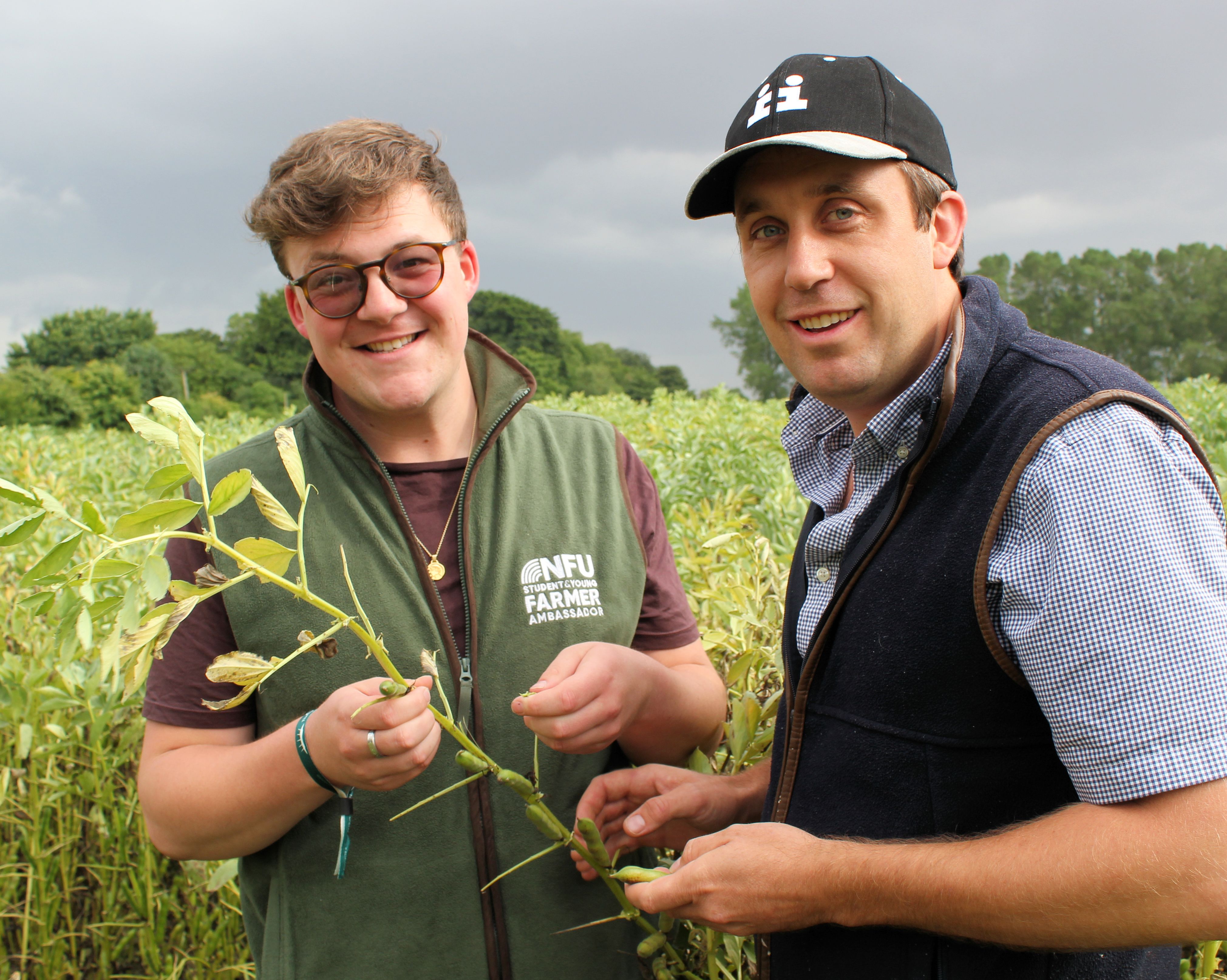Whether it’s put under a microscope or the focus of landscape-scale agreements, good soil management lies at the heart of approaches taken by farms across Agrii’s Green Horizons network to improve sustainability. CPM reports on two different systems.
There is a place for both natural and conventional systems, but we are learning that the rules of engagement are different.
By Tom Allen-Stevens and Rob Jones
As you arrive at Mindrum Farm near Cornhill-on-Tweed, Northumberland, Tom Fairfax beckons you excitedly into the farm office to “Come – look, see.”
There on a table is a microscope, and Tom eagerly invites you to look at the sample he’s been studying. “I took this soil sample this morning. You can clearly see the flagellates moving around, as well as the amoeba in among the soil particles,” he says.
To the untrained eye, the jagged specks and jiggling shapes could really be anything, but for Tom, they’re evidence that his focus on soil health is paying dividends. “So many people talk about soil health, but it’s not until you actually look it in the eye that you understand what you’ve got. The joy of a microscope is you get a result in minutes – it makes the job so much more interesting,” he enthuses.
Tom took the 465ha mixed farm of light sandy loam soils, that roll down to the River Bowmont, out of a conventional share-farming agreement it had been in for 20 years. He’s now in the second year of converting the land to organic.
The move was a determined effort to “listen” to and be guided by his soils. “I had something of an epiphany moment five years ago, but it took me a while to understand what was going on,” recalls Tom.
“That year, our winter crops yielded about the same as those we sowed in spring, but the margin was very different. We were putting a fair amount of artificial N on to push crops, and I felt this was beginning to pull at the fabric of the place. I realise now that I wasn’t paying any attention to what the soils were telling me,” he explains.
Having decided on a change in direction, Tom researched the subject thoroughly. “In a fully functioning soil, fungi and bacteria mine nutrients from the soil and the atmosphere before these nutrients are released when these micro-organisms are consumed by successive layers in the soil food web,” he continues.
“Higher layers of this web have a wider carbon:nitrogen ratio than the bacteria, and release the excess nitrogen and other nutrients, which become available to plants. Added to this, the fungi in the soil effectively use carbon atoms as pit props to strengthen their mycelial networks, which ties up large amounts of excess carbon in healthy soil,” he explains.
“If all you’re doing is replacing what they do with artificial inputs, you’ll not only make them less active, you’ll lose these valuable microbes altogether.”

A blend of arable with grazed or foraged crops, the aim at Mindrum is to maximise the productive, sustainable balance, and generate as much productivity as possible from the sun.
With the help of his Agrii agronomist, Ruaridh Kohler, Tom’s made some fairly major changes to the rotation and enterprise mix of the farm, along with cutting out chemicals. “Not everyone wants to make such radical changes, but many of the principles of a soil-led system are the same, whether you’re fully organic, or just looking to embrace a more sustainable approach,” notes Ruaridh.
“Within Agrii trials, we’ve been looking closely at a number of products and management systems that support or mimic the soil biology. But although effective, none of them alone represent a silver bullet. The first step is to look in much more detail at the soil and how the plant interacts in its environment to identify what’s going on. The more we understand this, the more we can apply good science to the way we manage our crops and the products we use.”
As one of the farms in Agrii’s Green Horizons network, Mindrum has been under close scrutiny during its transition, notes Tom. “Ruaridh helps me identify the problems through monitoring, testing or bringing in fresh thinking. We then take a fairly deep-dive approach to soil and plant biology to try and solve them with biology as much as we can.”

Tom Fairfax’s studies of the soil biology literature and Soil Food Web courses stimulated his abiding interest in soil micro-organisms.
With that, Tom and Ruaridh move out onto the farm to catch up on progress. The mixed farm has a “balance” of enterprises, with an 80-head Angus/Shorthorn beef suckler herd. “The sheep flock was reduced to 1000 ewes to enable the transition to an organic system, but may well increase that again once we are through transition,” points out Tom.
The livestock graze 200-240ha of improved and permanent pasture, with a number of low-lying fields that seasonally flood, sensitively managed as part of an agri-environment scheme. Across the rest of the farm, Tom has blended arable with grazed or foraged crops to produce a “diverse integrated system”.
He gestures to a field of heritage wheat, into which he’s established a clover mix as a living understory, to illustrate this approach. The Naroque blend, grown for Wildfarmed Grain, was established in autumn, and then in January the crop was grazed with sheep.
“Before putting the sheep in, we broadcast three types of clover designed to complement the wheat crop as much as possible. The sheep grazed off any diseased wheat leaves, fertilised the crop and trod in the clover.
“We harvested 3.5-4t/ha of grain and a very heavy yield of straw. Interestingly, the long straw also enabled the wheat to outstrip the understory, resulting in a surprisingly clean crop, despite the diverse plant species mix-feeding the soil.”

Soil on a profuse bundle of roots under some Laureate spring barley at Mindrum is “glued in place” by the glomalin produced by bacteria, and will go under the microscope to check for further life.
What he’s also left with is an established clover-based ley. This will be grazed, depending on whether there’s enough moisture for regrowth, and then drilled with a rye cover crop. In early spring, the cover will either be grazed hard again and drilled to a spring crop or left and cut for silage.
“What was particularly interesting was the testing of the heritage wheat Ruraidh and I undertook,” notes Tom. “The soil samples showed we were deficient in many nutrients, especially nitrogen. Tissue samples came back as in the middle third for most nutrients – we were slightly low on N and zinc. But sap testing revealed the crop was in the middle third on everything.
“What this shows is that the soil biology has reached a level at which it’s now mining nutrients and is feeding the crop. But if we’d taken the soil test at face value, as in a conventional system, we would have applied N and probably not have benefited from the microbial activity. There is a place for both natural and conventional systems, but we are learning that the rules of engagement are different,” he adds.
Fully integrated approach
Growing from a single 60ha farm to 1400 owned hectares in 12 units across north Wiltshire and south Gloucestershire over the past seven years, Malmesbury-based CP Farming is taking a fully integrated, three-pronged approach to sustainability.

Mike Wilkins (left) and Ollie Pattemore check one of CP Farming’s promising bean crops.
Under the guidance of innovative young manager and NFU student and young farmer ambassador Mike Wilkins, the current 900ha of arable cropping, 200ha of stewardship and 300ha of permanent pasture, woodland and miscanthus are run in a way that’s aimed to support people, profitability and nature – all the arable cropping is managed under equal-profit share-farming agreements with local farming businesses.
Alongside these agreements, Mike and his core team run a flock of 1000 ewes, managed by head shepherd Jess King, together with the entire stewardship area ‘in house’ as separate enterprises. At the same time, he and Agrii agronomist Ollie Pattemore work closely with their cropping partners to ensure the Green Horizons network business is developed and managed to mutual benefit.
“We plan what we’re going to do together to both meet the core trajectory we have across our business and make the most of their farming expertise and resources,” explains Mike. “We provide all the inputs and agronomy, while our partners supply the machinery and labour. Splitting the profits 50/50 ensures we’re all working to the same goal.
Growing crops for human use, minimising cultivation, reducing inputs, improving soils and encouraging both wildlife and responsible public access are all key elements of CP Farming’s direction of travel as it aims to improve sustainability.
When the business acquires new land, the first thing it does is combine local knowledge with conductivity scans, carried out as part of the Rhiza digital package, to establish a baseline for their future management. The most appropriate stewardship areas and options are planned, agreed and entered into.
“Our land ranges from chalk with flint to Cotswold brash, heavy clay over chalk and everything in between,” says Mike. “We are always open-minded about the management specifics as long as they meet the general direction we want to go in. Ollie and I work with our cropping partners to explore ways of cutting back on cultivations appropriate for their conditions and needs.”
One example was a switch out of a fairly intensive cultivation regime on a heavy clay block the business acquired into a strip-till system with a Mzuri drill, which confines the cultivation needed to the seeding strip. “As well as improving soil structure, this has cut down seedbed preparation time and, with it, weather risk – not to mention cost, massively,” notes Ollie.
“Biosolids are very useful on our generally low P index land,” he continues. “The readily available phosphate it provides – and any flea beetle repellent effect – makes it particularly valuable ahead of the oilseed rape.”
Where this isn’t applied and ahead of most spring crops, specialist starter fertilisers are drilled down the spout as standard practice. “We aim to maximise nutrient use efficiency by getting our crops off to the best possible start, tissue testing at key stages of crop growth and tailoring micro-nutrition carefully to crop need through the season using the Agrii/Lancrop graphs,” notes Ollie.
Spring and winter beans, spring linseed and canary seed allow the business to rein back on total farm inputs as well as extending and diversifying the rotations. Miscanthus is grown as a trial on 20ha of particularly poor ground, while around 66ha of GS4 stewardship herbal leys in the arable rotation also play their part in reducing inputs. Around all fields are 4-6m margins down to AB1 and AB8 pollen and nectar mixes, and AB9 winter bird food blocks grown on the least productive arable land.
“Concentrating our cropping on the most productive ground allows us to focus our inputs as cost-effectively as we can, leaving land with the least cropping potential for wildlife instead, where it will deliver the greatest habitat value,” stresses Mike.
“The herbal leys provide excellent ewe and lamb feed while they, in turn, manage the leys as they need to be. AB13 brassica fodder crops are equally valuable for lamb fattening, as are the other cover mixes we grow ahead of our linseed and canary seed. Being later sown, these give far more leeway for sheep grazing than covers before spring barley,” he adds.
The sheep travel widely, from Tetbury to Marlborough, utilising the stewardship options and cover crops in the arable rotations as well as the permanent grassland. Fieldwork involved in the establishment and maintenance of these areas is contracted separately to the farming partners.
“Bred for ease of management, worm resistance and production from grazing, the bulk of our sheep are Exlanas,” continues Mike. “These are perfect for our all-outdoor system. Alongside them, we have just invested in a flock of Romneys for their premium wool. This fits well with our focus on growing crops for human use rather than animal feeding, wherever possible.”
Looking ahead, Mike and Ollie are aiming to extend CP Farming’s stewardship agreements as the Local Nature Recovery element of ELMs takes shape. They are also looking to build on the 20km of wildlife corridors they already have in the 4-6m margins either side of each field boundary, adding avenues of trees to enhance the value of these networks across the business’ farms.
A move into silvopasture for permanent grassland and agroforestry on arable ground are also on the cards. But while the business is determined to come in line with NFU’s commitment to be net zero by 2040, it’s not taking up any carbon-offsetting agreements on offer at present, and Mike’s hesitant about biodiversity net gain options available through local developers.
“We would far rather contribute to ensuring food chains like bread-making, of which we are a part, achieve net zero. Marketing our own truly sustainably produced lamb under a net zero and biodiversity-gaining brand in a tie-up with a responsible retailer is more the approach we’re looking for,” he concludes.
Green Horizons
The farmer network is part of Agrii’s ambitious Green Horizons plan of practical action to improve the sustainability of UK food and farming.
Focussed on increasing farm productivity and viability, providing integrated whole farm solutions, improving soil resilience, enhancing the environment, and extending stakeholder engagement, this initiative brings together the best scientific intelligence and farm experience to inform future improvement action.
Network growers are working alongside Agrii’s extensive variety, soil resilience, IPM and other trial work, and collaborative projects with a range of partners to share ideas, test approaches and showcase progress.
Get up-to-date information and a series of specialist insight reports here.
This article was taken from the latest issue of CPM. For more articles like this, subscribe here.




